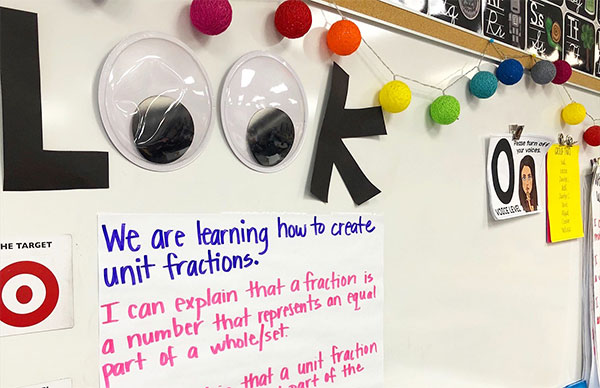Success criteria in education are specific indicators used to measure the achievement of educational goals and demonstrate the mastery of learning objectives. Education success criteria provide clear guidelines for assessing student progress and help educators evaluate the effectiveness of instructional practices.
These criteria highlight the essential knowledge, skills, and attitudes students should develop during their educational journey. By defining the desired outcomes, success criteria enable educators to design targeted instruction and effectively monitor student performance. Moreover, they empower students by providing a roadmap for success and enabling self-assessment.
When implemented effectively, education success criteria contribute to improved learning outcomes, increased student motivation, and enhanced accountability in the educational system. We will explore the importance of success criteria in education and how they can positively impact student achievement.
Factors That Define Success Criteria In Education
Factors that Define Success Criteria in Education
Success criteria in education are essential for measuring the effectiveness of learning outcomes. Learning objectives play a crucial role in defining these criteria. They provide a clear roadmap for both educators and students, guiding the teaching and learning process. By outlining specific knowledge, skills, and competencies that students should acquire, learning objectives establish a clear direction and purpose for education.
Clear expectations are also important for success criteria. When expectations are communicated effectively, students understand what is required of them and can work towards meeting those expectations. This clarity fosters engagement, motivation, and a sense of accomplishment.
| Role of Learning Objectives | Importance of Clear Expectations |
|---|---|
| Outlines specific knowledge, skills, and competencies | Guides students towards meeting expectations |
| Establishes a clear direction and purpose | Fosters engagement and motivation |
When success criteria are well-defined, educators can assess student progress accurately and tailor instruction accordingly. This enables personalized learning experiences and promotes continuous improvement. By focusing on learning objectives and setting clear expectations, education systems can enhance student outcomes and drive educational success.
How Success Criteria Benefit Students
Success criteria in education provide several benefits to students. One of the key advantages is that they enhance motivation and engagement. By clearly outlining what is expected of students, success criteria give them a sense of purpose and direction, increasing their motivation to achieve the desired outcomes. When students understand the specific criteria they need to meet, they are more likely to stay focused, actively participate in learning activities, and seek opportunities for improvement.
Moreover, success criteria also guide learning and assessment. They help students understand what they need to do in order to succeed, enabling them to plan and prioritize their efforts accordingly. Additionally, success criteria assist teachers in designing meaningful and effective learning experiences that align with desired outcomes. When students and teachers are on the same page regarding the expected standards of achievement, it becomes easier to assess learning and provide timely feedback for improvement.
| Benefits of Success Criteria in Education |
|---|
| Enhances motivation and engagement |
| Guides learning and assessment |
Implementing Success Criteria In Education
Implementing Success Criteria in Education is essential for effective teaching and learning. It provides students with clear expectations and goals, helping them understand what is expected of them and how to achieve success. Strategies for Communicating Success Criteria include clearly defining the learning outcomes and communicating them to students in a way that is understandable and actionable. Teachers can use various methods such as rubrics, checklists, and exemplars to communicate success criteria effectively. These tools help students self-assess their progress and make improvements based on specific feedback. Evaluating and Modifying Success Criteria is an ongoing process. Teachers need to regularly assess the effectiveness of the criteria and make necessary modifications to ensure they align with the desired learning outcomes. This allows for continuous improvement and enhances student achievement. By implementing success criteria, educators can create a supportive learning environment where students are motivated to achieve their goals.
Defining Learning Objectives
Defining Learning Objectives
Learning objectives play a crucial role in education, providing a clear roadmap for both educators and learners. Understanding the purpose of learning objectives is essential in designing an effective curriculum. These objectives serve as a guide for students, helping them focus on the key concepts and skills they are expected to master.
Components of effective learning objectives include
- Specificity: Learning objectives should be concise and specific, clearly defining what students should be able to accomplish.
- Measurability: Learning objectives should be measurable, allowing educators to assess student progress.
- Relevance: Learning objectives should be relevant to the subject matter and align with the broader educational goals.
- Attainability: Learning objectives should be designed to challenge students while remaining achievable.
- Time-bound: Learning objectives should include a timeframe, providing a sense of urgency and focus.
Note: Crafting well-defined learning objectives requires careful consideration and alignment with educational outcomes. By incorporating these components, educators can create meaningful objectives that enhance the learning experience for students.
Connecting Learning Objectives To Success Criteria
Connecting Learning Objectives to Success Criteria
Aligning Objectives with Desired Outcomes
In order to ensure clarity and relevance in education, it is important to connect learning objectives with success criteria. This alignment helps educators and students understand the expectations and desired outcomes of the learning process. By clearly defining the objectives and success criteria, educators can design effective lessons and assessments that promote student growth and achievement.
When aligning objectives with desired outcomes, educators should consider the specific knowledge, skills, and attitudes that students are expected to demonstrate. The success criteria should reflect these expectations and provide clear indicators of mastery. This helps students understand what they need to do in order to be successful and allows educators to assess their progress accurately.
By aligning objectives with desired outcomes, educators can create a cohesive learning experience that promotes student engagement and motivation. Students are more likely to be invested in their learning when they understand the purpose and expectations. This alignment also helps ensure that the curriculum is relevant and meets the needs of the students.
Assessing Learning Objectives
A key aspect of effective education is assessing student progress and ensuring that learning objectives are being met. This involves evaluating the success criteria for student learning and using data to inform instruction.
Methods For Evaluating Student Progress
Educators employ various methods to assess student progress. One common approach is through formative assessments, which provide ongoing feedback and allow for adjustments in teaching strategies. These could include quizzes, worksheets, or class discussions. Summative assessments, on the other hand, measure learning outcomes at the end of a unit or course. These can take the form of exams, projects, or presentations.
Data-driven instruction is another valuable tool for evaluating student progress. By collecting and analyzing data, educators gain insights into individual student strengths and areas that need improvement. This information can inform instructional decisions, allowing teachers to tailor their approaches to meet the needs of their students.
| Benefits of Data-Driven Instruction | Examples |
|---|---|
| Identifying learning gaps |
|
| Tracking student growth |
|
| Personalizing instruction |
|
| Evaluating effectiveness of teaching strategies |
|
Establishing Clear Expectations
htmlEstablishing Clear Expectations
Setting high standards for success is essential in education as it provides students with a clear understanding of what is expected of them. Clear instructions and guidelines are crucial in effectively communicating these expectations. By clearly outlining the learning objectives, goals, and grading criteria, students are able to comprehend the requirements and work towards achieving success.
When students have a clear understanding of expectations, they are motivated to put in the effort and engage in the learning process. By setting high standards, educators encourage students to strive for excellence and reach their full potential.
Providing clear instructions and guidelines not only assists students in meeting the success criteria, but also helps in minimizing confusion and ambiguity. When students have a clear roadmap to follow, they can effectively plan their learning journey and address any areas of improvement. This clarity fosters a positive learning environment and empowers students to take ownership of their education.

Credit: www.oise.utoronto.ca
Fostering Student Ownership
htmlSuccess criteria in education play a vital role in fostering student ownership. Encouraging self-reflection and goal-setting enables students to take charge of their learning journey. By encouraging students to reflect on their progress, they become more aware of their strengths and areas for improvement. This self-awareness helps them set meaningful goals and develop a growth mindset.
An important aspect of success criteria is promoting accountability and responsibility. Students are encouraged to take ownership of their learning by holding themselves accountable for their actions and outcomes. This fosters a sense of responsibility and empowers students to become active participants in their education.
By incorporating success criteria in education, educators empower students to take control of their learning journey. This not only enhances their academic performance but also equips them with essential skills for lifelong learning and success.
Creating A Supportive Learning Environment
Creating a Supportive Learning Environment: Creating a supportive learning environment is essential in providing students with the tools they need to succeed. One crucial aspect is offering feedback and guidance to encourage student growth. By providing constructive feedback, highlighting areas of improvement, and suggesting strategies for advancement, students can gain valuable insights into their progress and identify areas where they can improve. Additionally, teachers can encourage a growth mindset among their students. A growth mindset fosters a belief that abilities and intelligence can be developed through dedication, practice, and effort. By cultivating a growth mindset, teachers can empower students to view challenges as opportunities for growth and to persist in the face of setbacks. This approach to learning not only helps students achieve success academically but also equips them with valuable life skills. Overall, creating a supportive learning environment involves offering feedback and guidance while fostering a growth mindset among students.Frequently Asked Questions For What Are Success Criteria In Education
What Is Included In A Success Criteria?
Success criteria typically include specific and measurable goals, objectives, or targets that define the desired outcome or achievement. This can include factors such as metrics, key performance indicators (KPIs), deliverables, timelines, and quality standards. Success criteria act as guidelines to evaluate the effectiveness and success of a project, task, or initiative.
What Are Examples Of Criteria In Education?
Examples of criteria in education include academic performance, attendance, behavior, participation, and completion of assignments.
What Is Success Criteria In Education Research?
Success criteria in education research refers to specific goals or benchmarks used to measure the effectiveness of educational methods or interventions. These criteria help researchers determine whether a program or approach is achieving its intended outcomes, allowing for evidence-based decision-making and improvement in educational practices.
Why Is Success Criteria Important In Education?
Success criteria in education are crucial as they provide clear guidelines for students’ learning objectives. They help teachers measure progress, identify areas for improvement, and tailor instruction accordingly. By setting benchmarks, success criteria enhance motivation, engagement, and achievement among students, ensuring effective and meaningful learning experiences.
Conclusion
To summarize, understanding and defining success criteria in education is crucial for effective teaching and learning. By establishing clear goals and criteria, educators can guide students towards meaningful achievements. These criteria should be measurable and aligned with the desired learning outcomes.
It is vital for students to have a clear understanding of what is expected of them and for teachers to provide constructive feedback to support their growth. Ultimately, success criteria in education empower students, enhance their motivation, and contribute to their overall educational journey.







